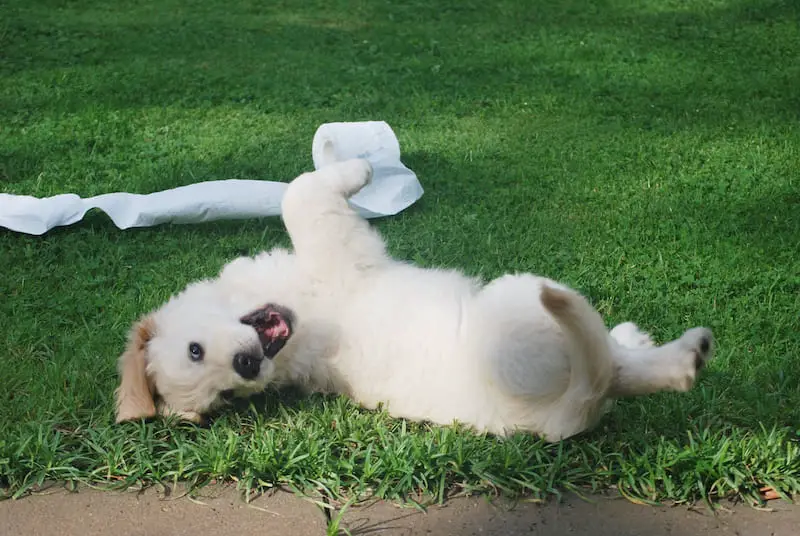4 to 6 Months
After four months, you should be done immunizing your puppy. Immunization is very important, so make sure you do it! After your dogs have been immunized, the world is indeed their oyster. They can get on with doing things dogs should do – explore their surroundings. If you have been a pretty good dog owner, your dog should already be familiar with its environment and people by this time.
Your dog’s energy levels are going up at this stage. Your dog would be very excited and would fancy playing with other dogs. Puppies are trying to become social beings at this stage, and what you will interpret as aggression would just be them playing. You would notice your dog barking, biting, and running around. Do not get too worried about these behaviors. However, take notice of your dog’s behavior if it is violent. Are they causing harm to others? Are they losing their temper? Are they acting unnecessarily nervous? When you leave the house, do they seem afraid? That is such a big deal, and you have to take note.
6 Months to One-Year-Old
By this point, your little dog is more acquainted with your daily routine and its environment. It should know how things work by now. This doesn’t mean you should stop training it. No! you have to continue! Keep up with socialization, exercise, and training.
Most dogs are energetic and lively. But at this point, your dogs should be quieter. You should notice that your dogs have changed and aren’t as unruly as they used to be. Well, this is all dependent on several things, especially how you have trained them.
One to Two Years of Age
Depending on your dog’s breed, it will arrive at full adulthood following a year or two of life. Physically bigger breeds will, in general, develop more slowly, so it might happen nearer to the two-years.
In any case, this is the point at which your dog will be a lot more settled. This doesn’t mean that they will not have energy. However, it will be energy saved for playing outside.
At the point when you glance back at the earlier stages and the troubles you went through, you would see that you have come a long way—Pat yourself on the back. You are one good dog parent.












